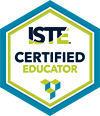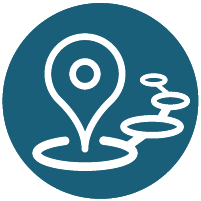Teaching Beyond Boundaries: Evolve Your Skills, Empower Your Learners
,
Virtual
Session description
Outline
- Welcome + Icebreaker (5 min)
Quick introduction and warm-up activity to spark reflection and connection
- Authentic Learning & Co-Learning (5 min)
Explore a Grade 1 inquiry into holograms and animated drawings
- Activity #1: ISTE Match-Up Challenge (10 min)
Match real student artifacts to ISTE standards via an interactive Slido poll
- Activity #2: Learning Design Challenge (15 min)
Collaborate to extend a learning idea with edtech tools
- Mapping Growth Through Standards (5 min)
Explore strategies for aligning learning experiences to ISTE standards
- Key Takeaways (5 min)
Recap big ideas and practical takeaways from the session
- Professional Growth with ISTE (5 min)
Explore how the ISTE standards can guide your ongoing professional development
Supporting research
The ISTE Standards for educators: https://iste.org/standards/educators
The STE Standards for students: https://iste.org/standards/students
Meeting the Challenges of STEM education in K-12. Education through Design Thinking: https://files.eric.ed.gov/fulltext/EJ1299969.pdf, Table 2. Comparison of d.school, HPI, and IDEO design thinking approaches considering Brown’s design thinking approach
Three dominant DT methods are commonly employed within education:
Stanford's d.school approach (since 2005) consists of five stages: Empathy, Define, Ideate, Prototype, Test
Hasso Plattner Institute (HPI) approach (since 2008) has six stages: Understand, Observe, Point of View, Ideate, Prototype, Test
IDEO's approach (since 2012) includes five stages and a zero-step: Define a Challenge, Discovery, Interpretation, Ideation, Experimentation, Evolution.
All three Design Thinking (DT) approaches have similarities with Brown's method.
Fostering computational thinking and design thinking in the PYP, MYP and DP (2020): https://www.ibo.org/contentassets/318968269ae5441d8df5ae76542817a0/ct-and-dt-full-report.pdf, Figure 1. Stanford d.school Design Thinking Process.
Presenters


Session specifications
Topic:
Grade level:
Audience:
Attendee devices:
Attendee device specification:
Laptop: Chromebook, Mac, PC
Tablet: Android, iOS, Windows
Participant accounts, software and other materials:
Subject area:
ISTE Standards:
Empowered Learner
- Set learning goals, develop strategies leveraging technology to achieve them and reflect on the learning process to improve learning outcomes.
- Exhibit a tolerance for ambiguity, perseverance and the capacity to work with open-ended problems.
Designer
- Design authentic learning activities that align with educational standards and use digital tools and resources to maximize learning.
TLPs:
Additional detail:
| Related exhibitors: | Canva Education |

 Back
Back Trips and Tours
Trips and Tours Virtual Session
Virtual Session